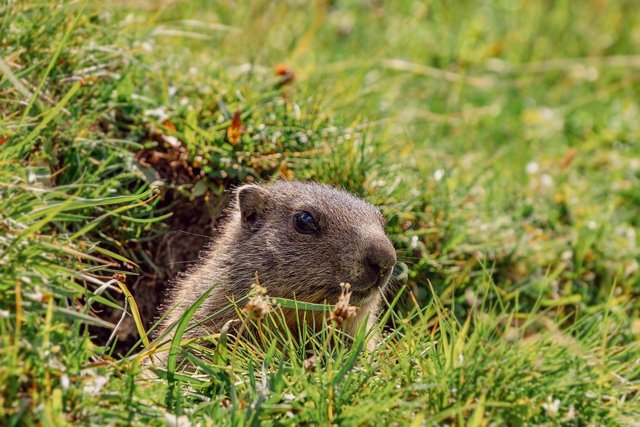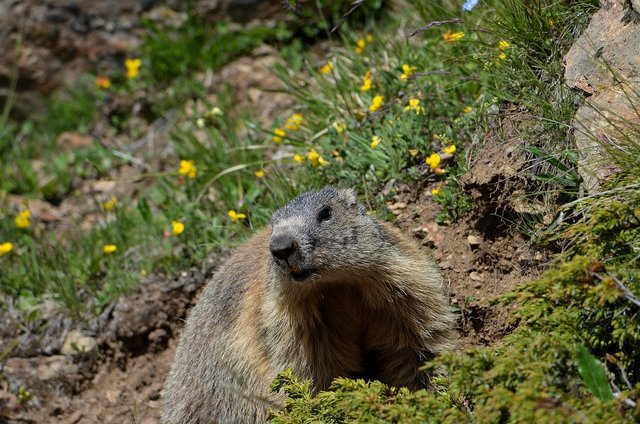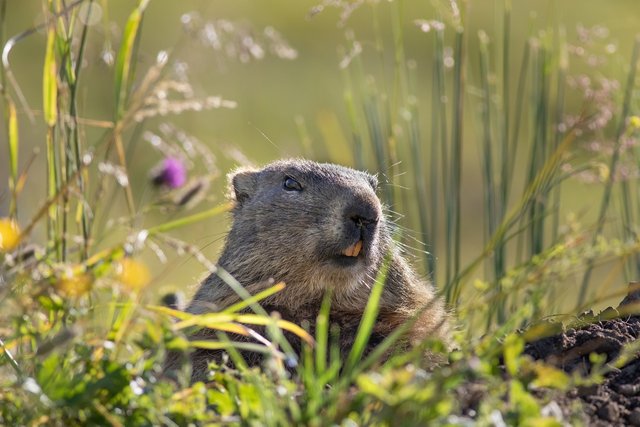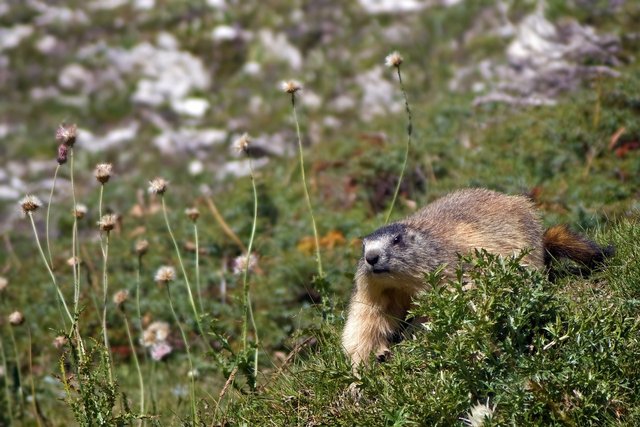Marmots and their lives

Marmots, or also called guinea pigs, are small animals that belong to the Sciuridae family and are part of the Marmota genus. Marmots are widespread in the northern hemisphere of the Earth, especially in mountainous areas in Europe, Asia and North America. They are known for their unique lifestyle and importance in the natural ecosystem of the mountains.
Morphology and Habitat
Marmots have large bodies for rodents, with a body length usually between 42 to 68 cm, plus a tail that is around 13 to 21 cm long. They have small ears and thick fur, generally grayish brown or yellowish with a lighter belly. Their physical structure is well suited to living in often harsh and rocky mountain environments.
Marmots mainly inhabit mountain grasslands, rocky slopes and alpine areas at altitudes between 1,500 and 3,500 meters above sea level. They build elaborate nests in the ground, consisting of interconnected tunnels and chambers that serve as shelter, shelter, and for hibernating.

Behavior and Social
Marmots are social animals that live in small groups consisting of a few individuals to dozens of marmots. They communicate with each other through distinctive whistle sounds to warn of danger or as other calls. This warning system helps groups of marmots to avoid predators such as eagles, foxes and wolves that could threaten them.
The main diet of guinea pigs consists of plants such as grass, leaves, and sometimes seeds. They often gather food in the summer to store food during the harsh winter, where they hibernate in their nests. During this period, guinea pigs slow down their metabolism significantly to conserve energy.

Role in the Ecosystem
Marmots have an important role in mountain ecosystems. Their grazing activities help control the growth of certain plants, which in turn affects the availability of resources for other animals in the same ecosystem. In addition, abandoned marmot nests can provide shelter for other animals.
However, marmot populations are not always safe. They are often targets for hunting because of their delicious meat and useful fur. Apart from that, climate change and habitat disturbance also pose serious threats to the survival of marmots in many areas.

Protection and Conservation
Several species of marmots are currently legally protected due to their declining populations. Conservation efforts include preserving its natural habitat and monitoring uncontrolled hunting activities. A better understanding of marmot ecology also helps in designing effective conservation strategies.
In conclusion, marmots are not just adorable rodents, but also have an important role in maintaining natural balance in the mountain environment. Through protection efforts and a deeper understanding of their behavior and habitat, we can help ensure that marmots can continue to contribute to their ecosystems in positive ways.
Thank you, friend!


I'm @steem.history, who is steem witness.
Thank you for witnessvoting for me.
please click it!
(Go to https://steemit.com/~witnesses and type fbslo at the bottom of the page)
The weight is reduced because of the lack of Voting Power. If you vote for me as a witness, you can get my little vote.
Upvoted. Thank You for sending some of your rewards to @null. It will make Steem stronger.